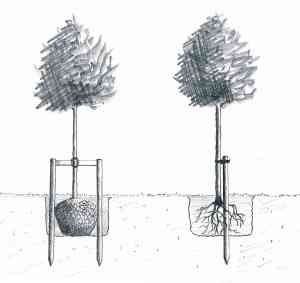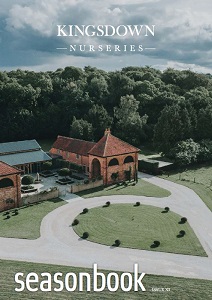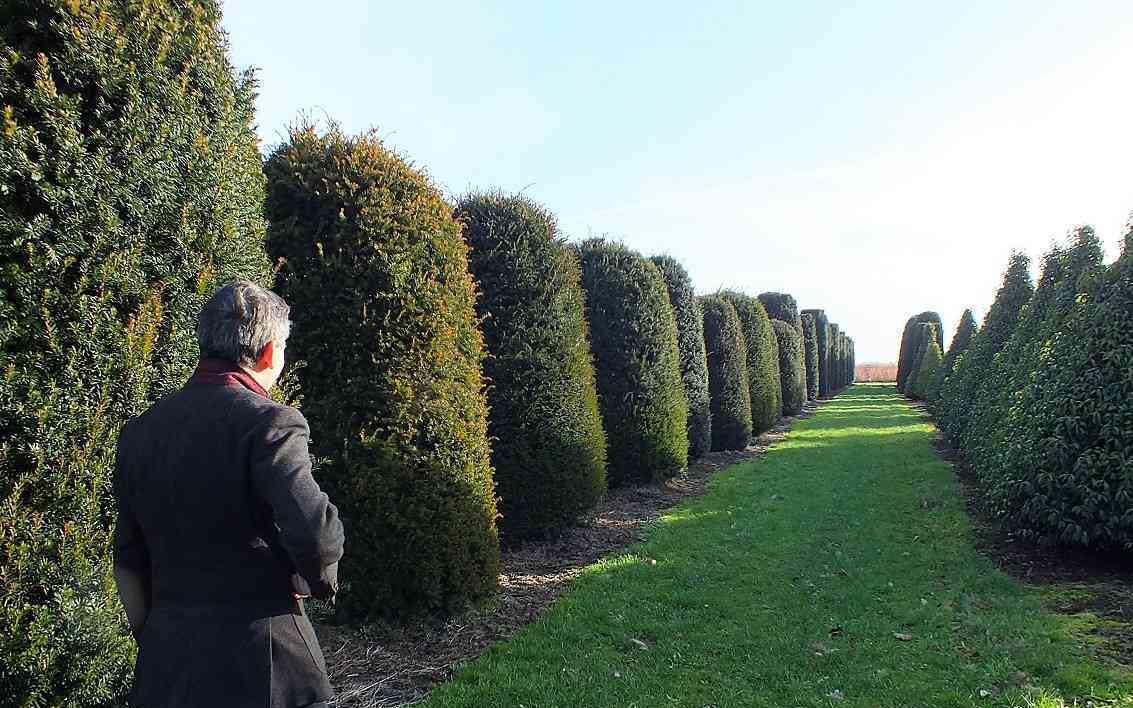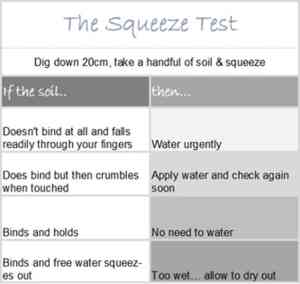Professional Planting Guide
Timing
Bare-rooted and rootballed trees and plants normally become available during November and planting continues until March. However, if there is a cold spring then the bareroot planting season can extend into April – conifer types take more readily to late planting than other varieties. Container grown plants and trees can be planted all year round.
Pre-Planting Preparation
Whether your plant is container grown or bareroot it is important that roots are kept moist before planting. Barerooted plants should be kept in their bags until just before planting. Do not set out long sections of hedging or trees leaving the roots exposed. If planting cannot be done within a week of delivery bareroot plants should be heeled into the ground. Dig the hole one and a half times the width of the container/ roots/rootball. Loosen the soil at the bottom of the hole and mix in a quantity of Tree & Shrub planting compost. Mycorrhizal Fungi (Rootgrow) should be used on all planting projects and it is now that you put a small quantity at the bottom of the hole if you are planting container or rootballed plants. (When planting bareroot plants Rootgrow is mixed into a ‘slurry’ and the roots are dipped into the mixture). Remove the pot from container grown plants (do not remove hessian or wire from rootballs) and position so that the soil level is the same as it was in the container or nursery. Planting deeper than this will kill most trees. (Staking should be done at this point, before back filling – see Staking.) The backfill should be a mixture of soil and Tree & Shrub compost. Fertilizer could also be added to the backfill – Growmore in the Summer or slow-release such as Enmag during the Winter. The backfill should be gently compacted ensuring there are no air pockets around the roots.
Planting bareroot whips: When planting through grass, first make a vertical cut into the turf. Then insert your spade to full depth at the base of the cut, lever back on the spade handle. The cut will now open up. Lift the spade blade slightly and put the plant behind the spade to the bottom of the hole. Slip it round to the centre of the cut, pull up slightly to the original soil level mark and tread in firmly, keeping the plant upright. If planting in loose soil there is no need to make the vertical cut. For more information on how to plant Kingsdown Native Country Hedge Mix please click here.
Pruning
Trees and bareroot hedging should be pruned at the time of planting and we recommend a third of the growth is cut back. Plants that are dug up from open ground unavoidably lose some of their roots. Pruning readjusts this balance, ensuring a greater root-to-shoot ratio and ultimately a better survival rate. Pruning means your hedge will bush out quicker and your trees will have a fuller crown and faster trunk growth. Pruning back container grown plants is not so critical.
Staking /Anchoring
Any single stem trees over 150cm will need to be secured. Staking is the cheapest option but anchoring systems are more pleasing to the eye as nothing shows above the surface. Stakes are driven firmly into the ground prior to backfilling, avoiding any roots. Normally container or rootballed trees are double staked with a cross-rail, belt and rubber pad. (See image 1) Bare-rooted trees are single staked with the stake running alongside the tree trunk and secured with a block and buckle tie. (See image 2) Don’t worry if the tree bends and sways in the wind but if the rootball rocks or moves the tree will need re-staking or the roots will not establish properly. Stakes should be removed after the third season as this will allow the tree to take the strain of the wind itself, strengthening the stem and encouraging further root growth. Anchoring systems are simple to use and very effective, even on large mature trees. Please ask for more information about tree anchoring systems.
belt and rubber pad. (See image 1) Bare-rooted trees are single staked with the stake running alongside the tree trunk and secured with a block and buckle tie. (See image 2) Don’t worry if the tree bends and sways in the wind but if the rootball rocks or moves the tree will need re-staking or the roots will not establish properly. Stakes should be removed after the third season as this will allow the tree to take the strain of the wind itself, strengthening the stem and encouraging further root growth. Anchoring systems are simple to use and very effective, even on large mature trees. Please ask for more information about tree anchoring systems.
Protection
Depending on the situation your plants or trees may need protection from a range of pests. Silvitube Guards or Spirals of 60cm will protect from Rabbits, 90cm Silvitube Guards from Muntjac deer and Hares, 120cm from Roe deer, 135cm from Fallow deer and 150cm from Red deer. Stakes will be required for the Silvitubes and bamboo canes for the Spirals. If you are planting in parkland you are likely to need classic metal protectors. Grazers is a liquid pest deterrent that is sprayed on to the plants using a hand or knapsack sprayer. It lasts for up to six weeks and is effective against damage from rabbits, deer, pigeons and mice and voles. The liquid is high concentrate and is an excellent choice if you or your client don’t like the sight of tree or shrub shelters. It is also suitable for edible crops although you will need to allow one week’s interval between treatment and harvest. Topbuxus Health-Mix offers first-rate protection from Box Blight. Please ask for more information or visit www.topbuxus.co.uk
Top-dressing
Apply ‘Fish, Blood and Bone’ or ‘Growmore’ in March/April at the rate of 75g/m2 or approximately a flat handful. Avoid top dressing in late summer as this will produce a flush of weak growth late in the season that is likely to be damaged by frost as we move into the Autumn.
Aftercare
It is very important that your hedge or trees are kept free of weed competition by spraying or using mulching materials until it is well established. Keep weeds and grass away from the base of the tree or hedge to a minimum distance of 50cm. When trimming a hedge as it matures keep it slightly wedge shaped (wider at the bottom). This ensures that light will reach the hedge all the way down and will prevent it becoming thin at the bottom. Monitor Spiral Guards and Tree Shelters to ensure they are not strangling the plants as they begin to grow. Check trees that have been staked and tied to loosen the tie as the trees grow and to make sure the stake is not rubbing on the trunk.
Mulch
Mulch will suppress weed competition for water and will also help to retain moisture in the ground. Apply mulch to a depth of 75mm allowing a 50mm gap around the base of the trunk.
Watering
Watering is a science and fail-safe rules cannot be defined. However, watering in the first season is vital. Use the ‘Squeeze Test’ to check the moisture on a regular basis and water accordingly. Watering tubes (and watering bags) can be used for trees and pressure compensated dripline is a good choice for hedges (please contact us for details.) If the first summer is a hot one, give the plants a good soak twice a week. Although rain is helpful, don’t assume that your plants have had enough water. During the summer the ground can become very hard and even torrential rain can simply run off the surface without penetrating deep enough for the plants to take it in. Always check using the ‘Squeeze Test’.
Over watering is easy to do and is the cause of many failures, especially in Taxus. If the ground is saturated there will be very little Oxygen in the soil leading to suffocation and root decay. Plants need Oxygen as much as they need water. Plants that are dying because of overwatering can have very similar symptoms to a plant that is dying of drought. This is simply because the roots are dead and not supplying the plant with any water! This can of course lead us to vigorously continue watering when in fact we are actually aggravating the situation.
Always check using the ‘Squeeze Test’ before watering.
If you are wondering what Rootgrow Mycorrhizal Fungi is and why it is so good then take a look at the video below.
How to use Rootgrow when planting bareroot plants:
How to use Rootgrow when planting containter grown plants:
Enquire Direct
Thank you for enquiring direct.
Please fill in your details below and we will get get back to you with a quotation as soon as possible. Alternatively you can email us with your requirements on sales@kingsdown-uk.com
The Seasonbook
The Seasonbook is a unique publication. You will learn in this book the story of Kingsdown Nurseries from our very beginnings to where we are today and how we work with our customers to create or improve Britain’s finest gardens. Inspirational, compelling and thought provoking, the Seasonbook is a valuable resource for any garden designer. Order your free copy today.




